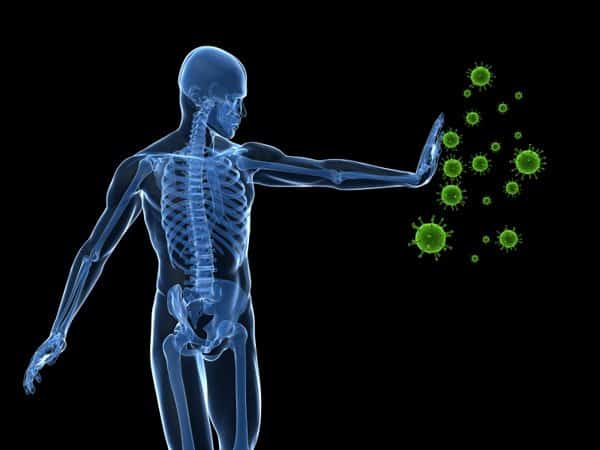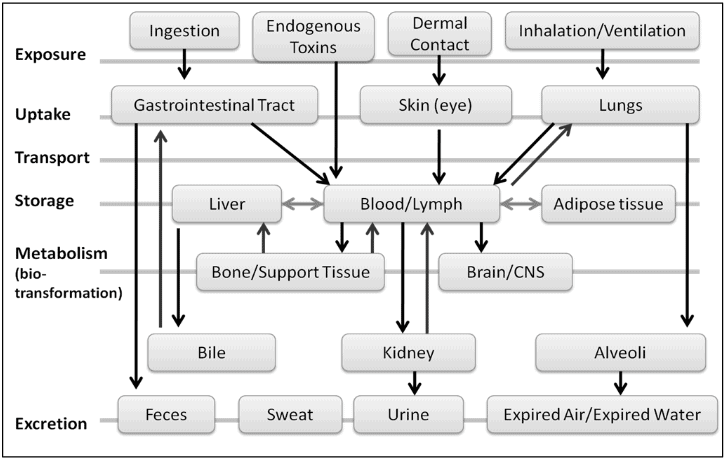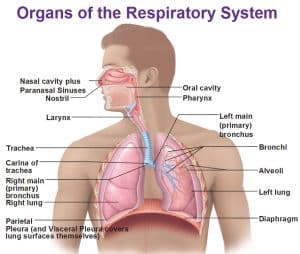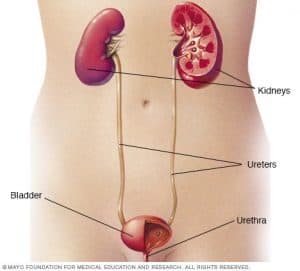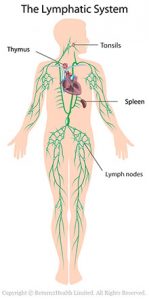Why You Must Detox All The Time, Part 2/3: How To Fine Tune Your Organs of Detoxification
Your organs of detoxification work tirelessly to get rid of the toxins that threaten your health and vitality. Learn what you can do to make them do a better job.
In Part I, Our World Is Toxic and So Are We, I covered: (1) Why it makes no sense to detox on an irregular basis – you must detox all the time because toxins do not take a break; (2) How toxins make you fat; and (3) Which chronic diseases are either caused or amplified by toxins.
Now it’s time to get some clarity about what your organs of detoxification do and how to fine tune them so that they’re working at full capacity to keep your healthy and vibrant.
In this article you'll discover:
- Which of your organs do the most to transform and expel toxins from your body.
- How they do it (more of that in Part 3).
- What you can do it make these organs of detoxification do a better job.
Five organs are typically highlighted as the major organs of detoxification: the liver, kidneys, colon, skin and lungs. Yet there are two more worthy of special mention: the gallbladder and the lymphatic system. (Yes, I realize the lymph system isn’t an organ.) Together, these seven systems or organs work in concert to detoxify both the exogenous toxins from your body.
(“Exogenous” toxins originate outside the body, such as heavy metals, chemicals, pesticides, etc. “Endogenous” toxins are created inside the body, and are typically by-products of metabolism and various toxic “intermediates” created by the detoxification process itself.)
Simply put, the:
- Liver detoxifies by changing the chemical nature of many toxins, primarily by converting fat-soluble toxins into water-soluble ones that make them easier to excrete.
- Gallbladder detoxifies by receiving bile from the liver that it excretes into the intestine, where it helps with the absorption of fats and stool movement.
- Gastrointestinal system detoxifies by transporting and digesting food, absorbing nutrients, and expelling waste.
- Kidneys detoxify by secreting toxins or filtering toxins out of the blood into the urine.
- Lungs detoxify by removing various gasses; for instance, gas-based anesthetics are removed from the body by the lungs.
- Skin detoxifies by sweating and reduces the penetration of toxic substances, especially those in water that are not absorbed by the skin as are those in oils.
- Lymphs detoxify by filtering, degrading, and transporting of the waste products back into the bloodstream for further cleansing, if needed.
The following illustration outlines the dynamic body systems interaction of toxicants, which include exposure, uptake, transport, storage, metabolism and excretion:
Yeah, that graphic is a real turn on.
An explanation is in order, and it’s coming up, beginning with the liver.
Although none work harder or is more important that the liver, each organ plays an important role in either biotransforming toxins into a molecular form that can be excreted, or facilitating the excretion itself, primarily via the urine and stool, but also via the breath, saliva, perspiration, breast milk, bile and hair.
Let’s take a look at these organs (and the lymph) work and how best to support their extremely important jobs.
How To Fine Tune Your Liver
The liver is the size of a football and sits on the lower right side of the ribcage, under the diaphragm and on top of the stomach. It is attached by a large vein to the stomach and small intestines.
The liver is our most important organ of detoxification. More than two quarts of blood pass through it every minute of your life, filtering and transforming chemicals to keep the body clean. It filters blood, stores glucose for energy, breaks down steroid hormones, produces and secretes bile, and can even regenerate itself — the only visceral organ that has this remarkable ability. The liver can regenerate back to its full size after surgical removal or chemical injury, even if only 25% of its original size remains.
The liver relies on a two-step enzymatic pathway for the neutralization of potentially harmful toxic chemical compounds that enter our bodies on a daily basis, as well as those toxins produced as a byproduct of metabolism. Through an extensive and complicated process that I’ll flesh out in Part 3, the liver neutralizes toxins – most of which are fat-soluble — by making them water-soluble, which are far easier to excrete from the body.
If the liver is overwhelmed by the body’s toxic load, diseased or for any reason is not functioning properly, most every other system in the body is compromised. Toxins that stay in the body for a long time can negatively affect various organs (including the liver itself), such as the, colon, kidney, heart, brain, lungs, skin and the endocrine system (hormones) — and even our DNA.
Is your liver function compromised?
The symptoms of a sluggish or overtaxed liver are varied and can include excess weight, liver and gall bladder diseases, headaches and migraines, digestive problems, allergies, immune system problems such as hay fever and asthma, food and chemical sensitivities, constipation, unexplained fatigue, skin itching and irritation, PMS and other menstrual problems.
If you’re experiencing any of those symptoms, know that maintaining a healthy liver is more about avoiding what’s bad for the liver than doing what’s good. At a minimum, men should avoid drinking more than two ounces of alcohol on a daily basis, one for women (one for women); maintain normal bodyweight; exercise regularly and be cautious of certain medications, such as cholesterol drugs and excessive amounts of acetaminophen (Tylenol).
Consider getting into the habit of squeezing a lemon into a glass of warm water upon arising. Lemon juice helps flush out unwanted materials in part because lemons increase the rate of urination in the body; therefore toxins are released at a faster rate, which helps keep your urinary tract healthy. The citric acid in lemons helps maximize enzyme function, which stimulates the liver and aids in detoxification.
In addition to fresh-squeezed lemon water upon arising, use other liver-cleansing food into your diet, such as apples, beets, broccoli, cauliflower, cabbage, carrots, cilantro, garlic, beets, limes, dandelion greens, squash, watercress, zucchini and turmeric/curcumin.
Cruciferous vegetables (cauliflower, cabbage, garden cress, bok choy, broccoli, brussels sprouts) are important because they contain compounds called glucosinolates, which aid in enzyme production in the liver. These liver enzymes help flush out carcinogens and other toxins, and have been shown to lower the risk of cancer. Dark leafy greens are also rich in chlorophylls to cut environmental toxins from the bloodstream. They also contain compounds to help neutralize heavy metals, chemicals, and pesticides. Bitter greens, such as arugula, chicory, and dandelion and mustard greens, also help increase production and flow of bile, to further help remove toxic residues.
Get The Bile Flowing
Of its more than 500 metabolic functions, the liver’s production of bile is among its most important. It’s in the bile that fat-soluble toxins get contained and later discharged into the gastrointestinal tract, where they eventually get excreted with stool.
The bile has most of the body’s metabolic wastes and is an essential “de-greaser” and “emulsifier” of dietary fats. Bile is also essential for the utilization of the fat-soluble vitamins A, D, E and K.
The bile that is produced by the liver also consists of already used hormones, toxins, foreign chemicals and heavy metals. Bile also has the conjugated toxins from the two phases of liver detoxification that I’ll be discussing in Part 3. These toxins may include carcinogens, xenobiotic chemicals, pharmaceuticals and heavy metals like mercury, aluminum and lead.
Although the gallbladder does not make the bile, it does receive it from the liver and must be able to secrete bile into the intestine, where it helps with the absorption of fats and stool movement. The bile and its toxic load are picked up by dietary fiber and excreted out the body in the feces.
A lack of dietary fiber results in inadequate binding of the bile, allowing toxins to be reabsorbed. Therefore, one of the most important ways to improve detoxification is to eat plenty of dietary fiber.
GIT Your Poop Out
The gastrointestinal tract (“GIT”) is an organ system that begins at the mouth and ends at the anus. In between are the esophagus, stomach, small intestine and large intestine (including the rectum).
The role of the GIT is to transport and digest food, absorb nutrients, and expel waste. Once digestion is completed, nutrients (such as the amino acids, sugars, fats, minerals, vitamins, etc.) penetrate through the intestinal mucous membranes into the venous capillaries that transport them to the liver.
After detoxification, the liver redistributes the nutrients into the blood stream. Once various chemicals, toxins, drugs, heavy metals and excess sex hormones that get extracted by digestion, the liver dumps them into the bile.
The GIT is an important organ of detoxification because of its capacity to receive toxins that have been bound to bile acids, and to excrete them in the stool. As mentioned earlier, bile needs to bind to dietary fiber to help ensure a quick exit from body in the stool. If there’s insufficient dietary fiber in the intestines, most of this bile will be reabsorbed back into the bloodstream, along with the toxins that have been mobilized for excretion.
A Bit On Fasting
Fasting is often done over a period of two to 14 days, during which toxins stored in fast are released (mobilized) and wind up in the intestinal track along with bile acids. The longer the fast, the less fiber exists. Given that bile-embedded toxins need fiber to bind to the toxins and exit them from the body via the stool, a lack of fiber may enable toxins in the bile to be recirculated and reabsorbed back into fat and other tissues. Thus, fasted detoxification can result in skin rashes, bloating/stomach pains, headaches, trouble sleeping, fatigue and irritability – all characteristic of the what is commonly called the “Detox Effect”.
A Bit on Enzymes and Probiotics
In addition to fiber, digestive bitters and enzymes, prebiotics and probiotics help ensure proper digestion, elimination and a healthy microbiome.
Digestive enzymes include amylase, cellulose, lactase, lipase, and protease, which help digest carbohydrates, fibers, dairy, fats and proteins. Proteolytic enzymes are also produced by the pancreas, as well as bromelain, papain, lumbrokinase, nattokinase, and serrapeptase.
Probiotics support the more than 400 species of life- and health-enhancing bacteria that live in the gut. They include L. acidophilus, bifidobacteria, L. bulgaricus, L. casei, and Streptococcus thermophilus.
Used as supplements, probiotics help keep harmful bacteria and other microorganisms in check, protect against food poisoning, mitigate side effects of antibiotic drugs, improve immune function, aid in the manufacture of B vitamins, reduce high cholesterol, and improve overall health and efficiency of the gastrointestinal tract.
You can increase your body’s own supply of gut probiotics by regularly consuming fermented foods — such as sauerkraut, kimchi, and miso soup – as well as using herbs.
Herbs have been used for centuries to keep up and restore gut health. They fall into categories such as:
- Anti-inflammatories, (chamomile);
- Astringents (meadowsweet to prevent and heal GI bleeding);
- Bitters (gentian and yarrow root to improve digestion);
- Carminatives (peppermint, spearmint, and valerian to prevent and relieve gas and bloating);
- Demulcents (marshmallow and slippery elm to soothe lining of GI tract); and
- Nervines (hops to ease stress).
The Kidneys — Let It Flow
The kidneys are two bean-shaped organs, each the size of a fist, located just below the rib cage, one on each side of the spine. Their role is to balance electrolytes in the blood (such as sodium, potassium, chloride, and bicarbonate), along with maintaining pH homeostasis (acid/alkaline balance).
The first place that blood from the stomach and intestines goes is to the liver. After being filtered in the liver, the blood goes to the heart and is pumped directly to the kidneys. About 23% of the blood pumped by the heart over the course of a minute goes to the kidneys. Within just a few minutes, all the blood in the body gets swept through the filtering system of the kidney.
Over the course of a day, the two kidneys filter about 120 to 150 quarts of blood to produce about one to two quarts of urine, composed of wastes and extra fluid. The waste material includes excess organic molecules from the blood, and it’s by this action that their best-known function is performed — the removal of waste products of metabolism.
In essence, the kidneys’ main job is to take all the blood in the body and clean it. In doing so, they cut a number of toxic substances after Phase II reactions, including caffeine, some drugs, and steroids. (Discussed in Part 3.) This is why the urine of athletes is tested for use of steroids and other banned substances.
Probably the best way to ensure optimal kidney function is by something called “dilution”. This means drinking plenty of purified water, which is the easiest and best way to keep kidneys functioning well.
The typical advice is to drink eight ounces of water eight times per day, but this can be modified up or down depending on how much other healthy liquids you’re ingesting, how much you’re sweating from heat and/or exercise, the color of your urine (should be light yellow or clear after the first morning void) and the amount of your daily urine, typically 6.3 cups (1.5 liters) or more each day.
Also beneficial for kidney health is to cut over-the-counter medications such as ibuprofen and naproxen (NSAID’s), and if you’re doing it — quit smoking.
Healthy foods that support the kidneys include red bell peppers, cabbage, cauliflower, garlic, onions, ginger, apples, cranberries, blueberries raspberries and cherries.
Herbs beneficial to kidneys include red clover, dandelion leaf, ginger, nettles, and parsley. Horsetail tea promotes kidney drainage.
The Skin, A Two-way Organ
Skin is our largest organ, one that serves an important role for thermo regulation, secretion and excretion.
The Chinese medical system refers to the skin as the “third kidney” – meaning that it functions to rid the body of excess moisture and toxins, particularly when the liver, kidneys and lungs are backed up and not properly functioning.

You know about that “glow” people often characterize as healthy skin? Such skin is not the result of salves or lotions, but of the overall health of the body.
Dry, thin, weathered, blotchy skin, and many odd rashes that seem to mysteriously appear, are often caused when the liver, kidneys, lungs or colon are overloaded and can no longer fulfill their detoxification functions adequately.
Many of the toxins that must be cleansed by the other organs of elimination enter the body transdermally through the skin because of its capacity to absorb many of the chemicals it contacts that are in perfumes, make-up, lotions, liquids, plastics, etc.
It’s important to realize the permeability of the skin and to first stop exposing it to toxins, and next aide its detoxification capabilities through sweat, circulation and absorption.
Eliminate the lotions, soaps, shampoos, conditioners, cosmetics and other personal care items that contain toxic chemicals, such as parabens, dioxanes, phthalates and various types of lauryl sulfates.
(Read the labels.)
Next, open your skin’s pores and eliminate toxins by saunas, and do exercise that induces sweating. Then pull out and absorb toxins by applying clay, such as montmorillonite or bentonite on the skin, especially on affected areas, such as rashes.
Finally, boost blood circulation and stimulate the lymphatic system to release toxins by dry body brushings, using a loofa or body brush; use circular movements and brush toward your heart.
Bathe In Clay
Applying a natural clay mask to your body is a clever way to entice toxins to come out through your skin. You can apply it to your face, make up a clay pack and apply it over your liver (to give your other major detoxifying organ a hand) or spread it over your entire body.
Montmorillonite (not of marine origin) clay does this job really well.
To prepare a clay pack, mix the dry clay powder with hot distilled water to make a spreadable paste. A layer about 2 to 3mm thick is spread on a piece of clean, white cloth, placed on the area and covered with a piece of plastic and a wool cloth. It’s then secured in place with a bandage and left for three to four hours.
For a facemask, simply spread the paste over your skin and leave to dry for about 15 minutes before wiping off with a warm face washer.
Bathe in Apple Cider Vinegar
A hot bath prepared with a cup of organic raw unfiltered apple cider vinegar and a cup of Epsom salts will draw toxins out through the skin and help accelerate the cleansing process. This can also help relieve joint pain as well as skin conditions like eczema and acne.
Rub Your Skin with 3% Hydrogen Peroxide
Think of hydrogen peroxide as liquid oxygen. Rub or spray it over your skin after showering. It will deliver oxygen through the pores of your skin and into your system.
You can also add one to two cups of 35% hydrogen peroxide to a half bathtub of water for a detoxifying bath. But a big BEWARE with this approach, because 35% hydrogen peroxide is nasty stuff that can highly irritate the skin – not to mention various tender spots — if not substantially diluted.
Sit In A Sauna
Like with just about anything that has to do with health, there’s some debate about it, but if you have the option, try infrared sauna therapy. Start with 10 minutes, perhaps for two sets (in for 10, rest outside for 10, and back in for 10), and gradually increase the duration and number of sets.
Doing this should help flush out toxins via your sweat, and improve circulation and internal congestion, promote the elimination of heavy metals, radioactive particles and other toxins, and improve oxygenation of the blood.
If you have a bit over $1,000 to spare, you can get an infrared sauna kit from JNH Lifestyles that has a 5-star average rating from 706 customers. Check it out here.
Sweat. A Lot.
As with sitting in a sauna, practicing Bikram (“hot”) yoga for 90 minutes will bring on the sweat in buckets, and with it, detoxification. Supposedly, some of the postures are tuned for organ-detoxifying, which (if true) would further enhance elimination of toxins via your sweat.
Breathe Heavily. And Often.
The poet Maya Angelou once said,
Life is not measured by how many breaths we take, but by the moments that take our breath away.
This sentiment is worthy of your contemplation, and so is this: if you live to 80 years of age, you will breathe about 672,768,000 times, or 23,040 breaths a day.
The respiratory tract consists of the lungs and bronchi. The lungs remove toxic gasses and volatile chemicals that can be breathed out of the body primarily in the form of carbonic gas and anesthetics. An example is the chemical, acetaldehyde, which is created when the liver breaks down alcohol. Acetaldehyde is what you smell on the breath of someone who has drunk a lot of alcohol.
Healthy membranes of the alveoli do not let solid waste penetrate. (Alveoli are tiny sacs within our lungs that allow oxygen and carbon dioxide to move between the lungs and bloodstream.) But, due to constant irritation by infectious microbes and other irritants, the alveoli may become porous and act as an emergency exit for toxins that the liver, kidneys and the intestinal tract did not succeed in eliminating.
Such substances are transported by the blood stream towards the lungs and bronchi, squeeze through the alveoli and we cough them up as phlegm. This phlegm not only consists of microbes and the products of their activity, but also of waste resulting from insufficient digestion and excretion.
Do this to clean and maintain the proper detox function of the lungs:
- First cut exposure to polluted air and smoke;
- Then, eat foods rich antioxidants, like blueberries, broccoli, spinach, grapes, sweet potatoes, green tea, mullein tea; and
- Consume various spices such as turmeric, ginger and cinnamon; also
- Herbs such as marshmallow root; finally
- Exercise vigorously enough to cause heavy, rhythmic breathing.
The Emphatic Lymphatic System
Last, but not least, the lymph system.
This system is not an organ of elimination per se, since it’s not an organ, but it nevertheless plays a crucial part in detoxification and immunity.
The lymph system is a network of tubes throughout the body that drains fluid (called lymph) from tissues and puts it back into the bloodstream. The main roles of the lymphatic system include:
- Managing the fluid levels in the body;
- Filtering out bacteria: and
- Housing types of white blood cells that are critical components of our immune system.
Lymphatic vessels cover the body in its entirety, from the tips of the toes to the top of the head. In these vessels is about two liters of lymph fluid called “interstitial fluid” that penetrates the membrane of the capillaries (the thinnest vessels), to keep the volume of lymph fluid constant and to allow the waste products to leave the cells and be carried away to the venous blood stream and evacuated.
The capillaries of the lymph and the capillaries of the venous blood work together, and one compensates for the deficiencies of the other.The network of lymphatic capillaries leads to bigger lymphatic vessels and finally to the lymphatic glands. Their tasks are focused on the defense of the body and the purification of its fluids to keep up proper function. These lymphatic glands are stations where infectious agents are filtered and lymphocytes (white blood cells) are produced.
The network of lymphatic capillaries leads to bigger lymphatic vessels and finally to the lymphatic glands. Their tasks are focused on the defense of the body and the purification of its fluids to keep up proper function. These lymphatic glands are stations where infectious agents are filtered and lymphocytes (white blood cells) are produced.If the production of
If the production of lymphocytes is insufficient, the body’s defense against invaders and against cancer and other immune disorders will be impaired. If the work of the lymph nodes is insufficient, the filtering, the degradation, and the transport of the waste products will be impeded, and the bodily environment will be more and more overwhelmed with toxic metabolites and toxins.
Do this to heal and maintain the health of your lymphatic system:
- Reduce stress via meditation and herbal adaptogens such as rhodiola, ashwagandha and ginseng, as well as an herb called manjista;
- Keep the body well hydrated with pure water;
- Eat “red foods” such as berries, cherries, pomegranate, beets and cranberries;
- Jump rope or use a rebounder to bounce around or jog in place; and
- Brush your skin, as follows…
Brush Your Skin
Dry body brushing your skin will boost circulation and stimulate the lymphatic system to release toxins. It also improves muscle tone and reduces puffiness and cellulite. Plus, it will leave your skin with a bright, youthful glow as it sloughs off dead skin cells that clog pores and encourages cell renewal.
So, go out and buy a natural body brush with a firm bristle. One with a long handle is generally best.
The best time to do your body brushing is first thing in the morning, before you shower. Using gentle, circular movements brush towards your heart. Start with the soles of your feet and work your way up your legs, then hands and arms. Reach over and brush your back from the buttocks up the back and around to the stomach. Brush your tummy in an anti-clockwise direction.
Dry skin brushing also helps to clear toxins from the lymphatics, and therefore improves immune functions. It also stimulates blood cleansing and is excellent for poor circulation.
Your Takeaway
If you made it this far you need a hobby.
Or you’re serious about getting healthy and mighty and you know that this can not happen with toxins ping ponging inside you.
Next week in the last of this three-part series on detoxification, I’ll dig into how the body actually biotransforms toxins into molecules that can be excreted and will explain what you need to do to make this happen (some of which has been revealed here.)
In the meantime, remember these three things:
- You have powerful and effective organs of detoxification that are constantly working together to detox both exogenous and endogenous toxins.
- These toxins can make you chronically ill, cause cancer and even alter your DNA
- There are many things you can do, as here enumerated, to excrete the toxins and thereby be awesome. Much of it is within your sphere of control.
Stay tuned for Part 3.
Update: Click Here for Part 3
Last Updated on February 27, 2022 by Joe Garma

